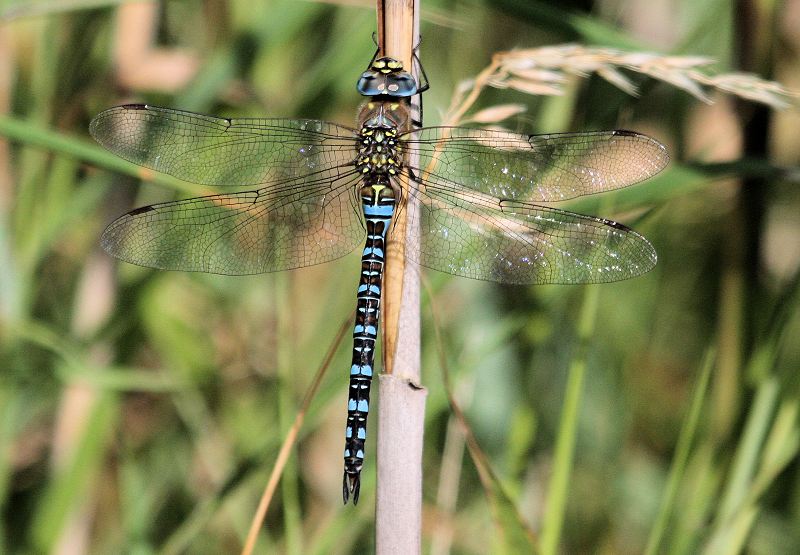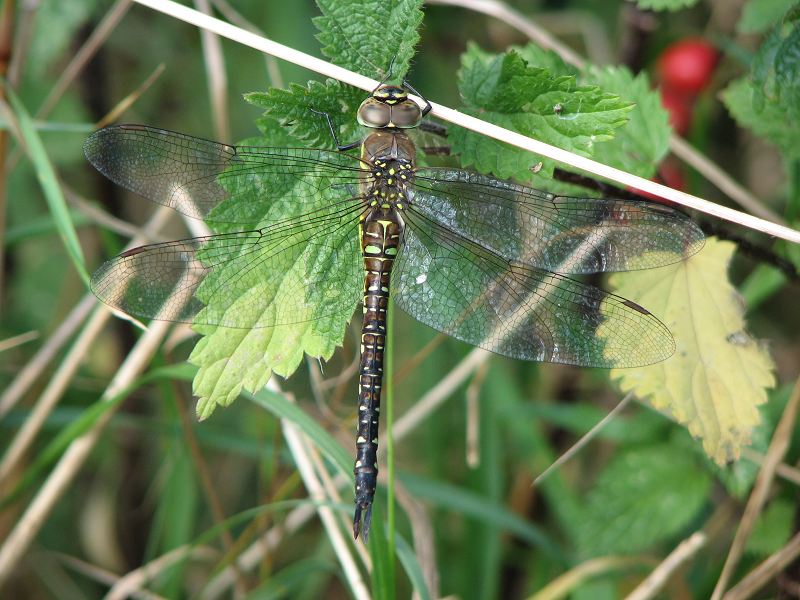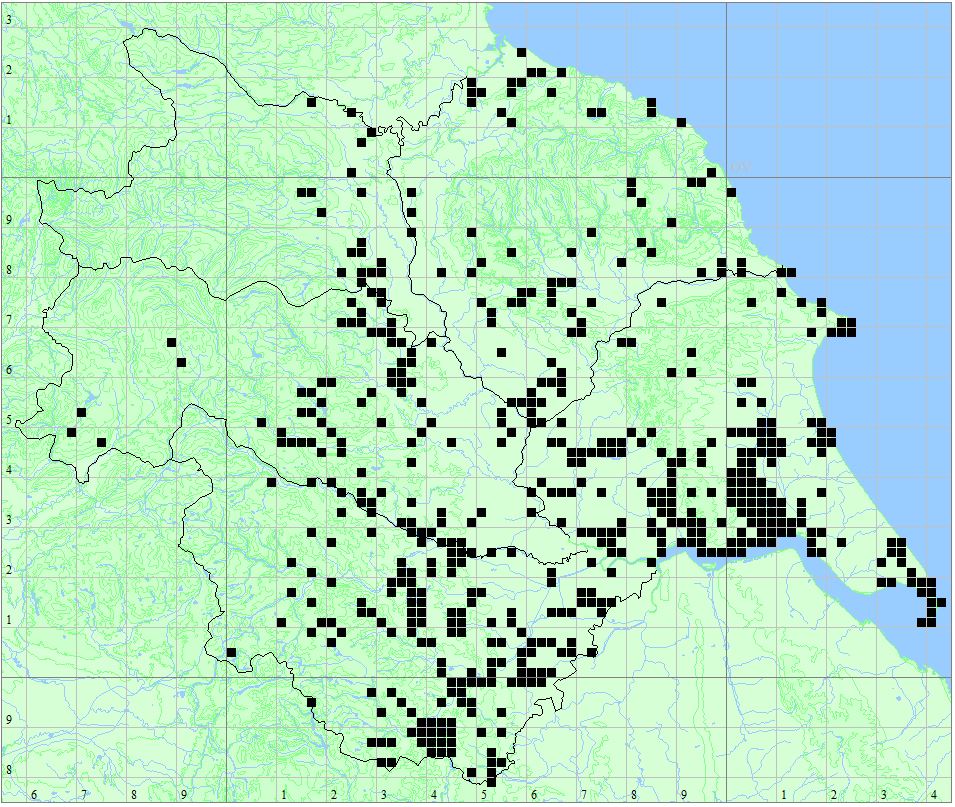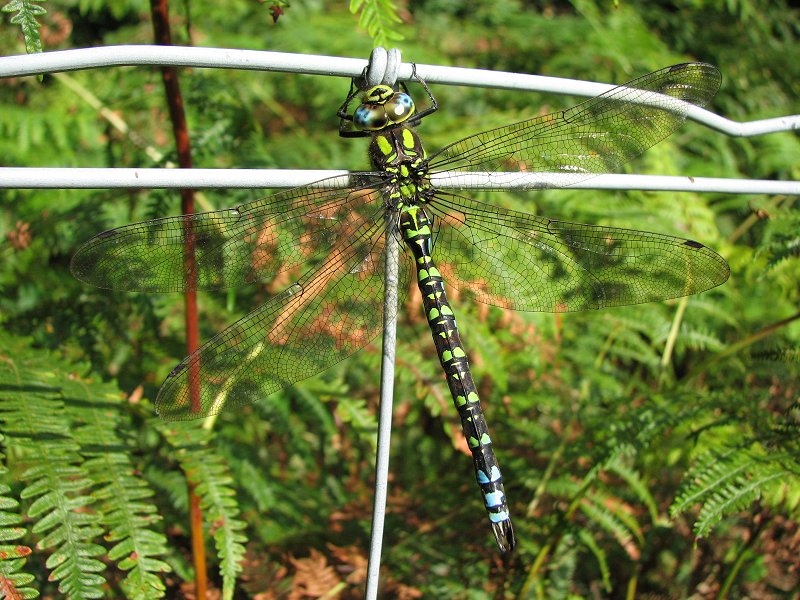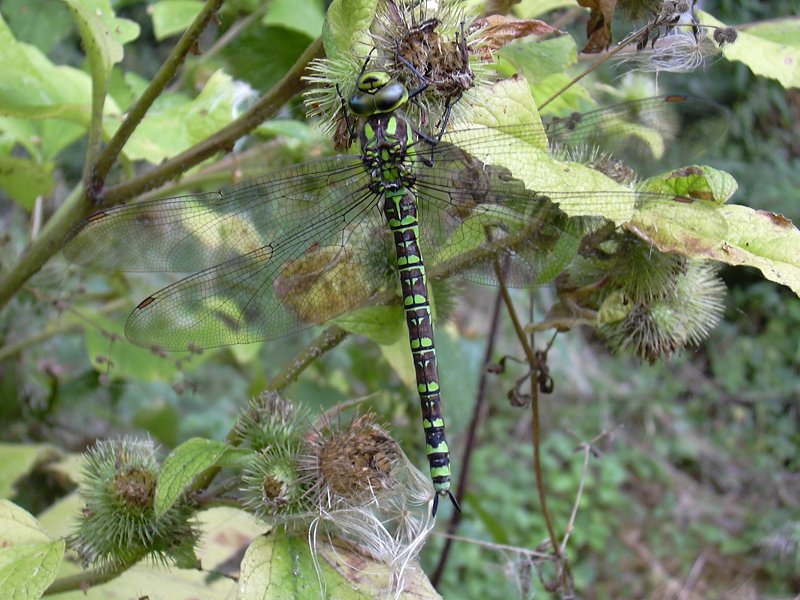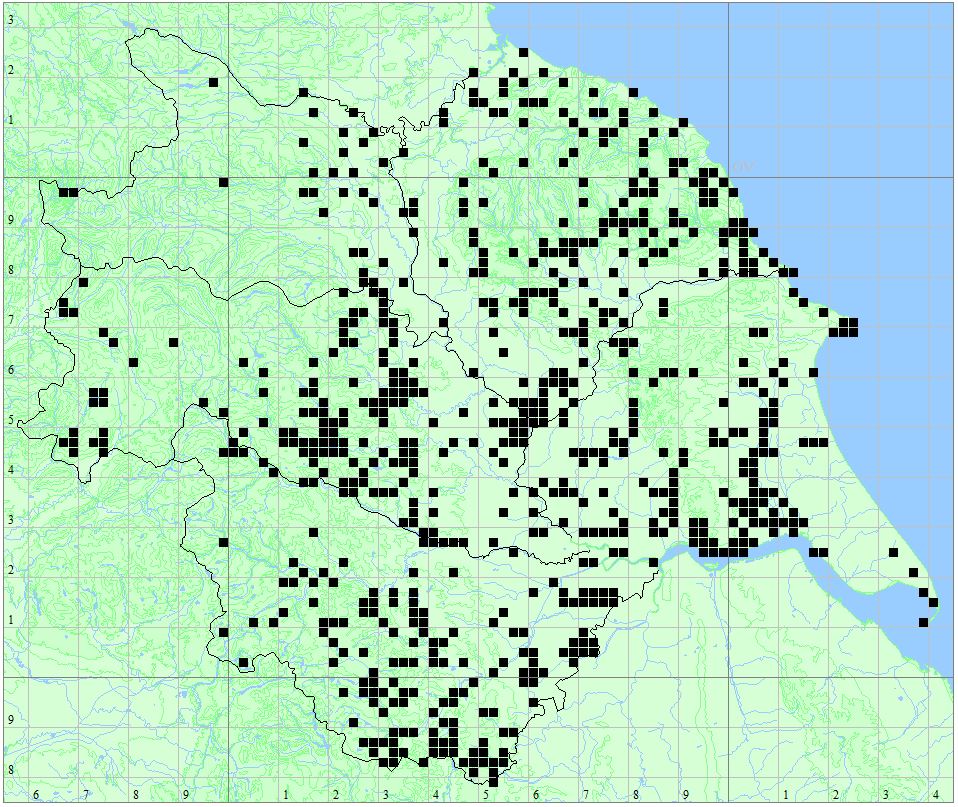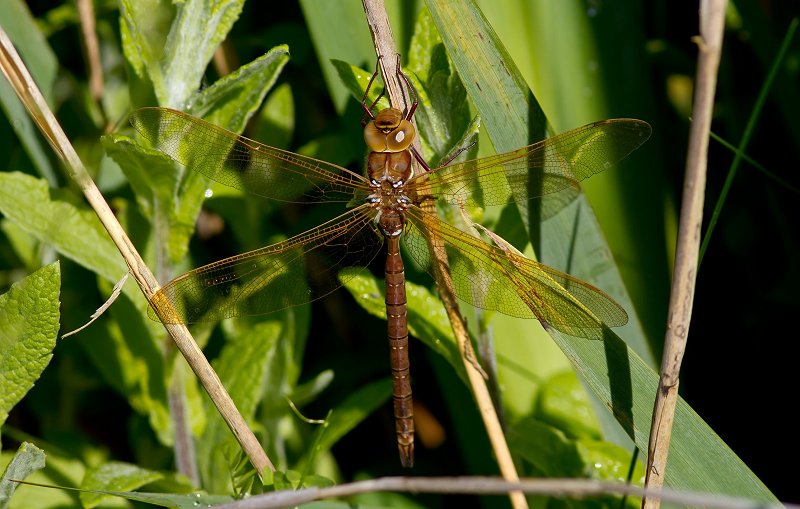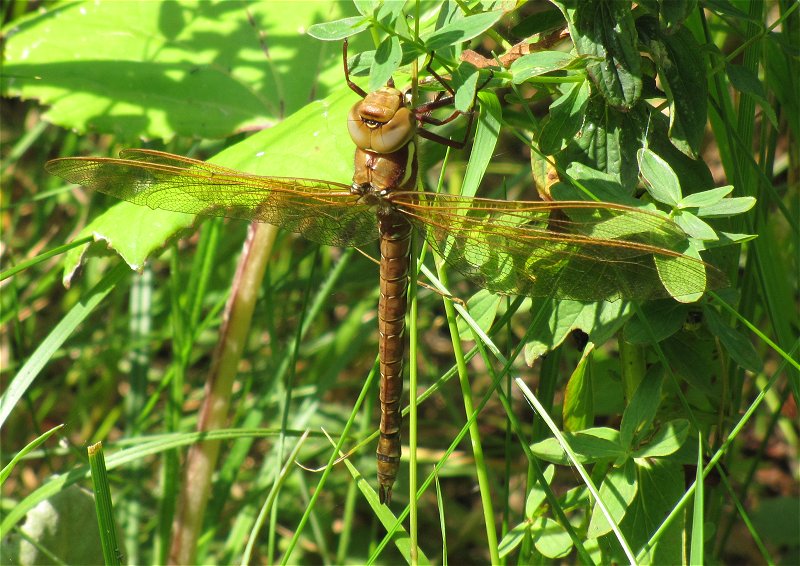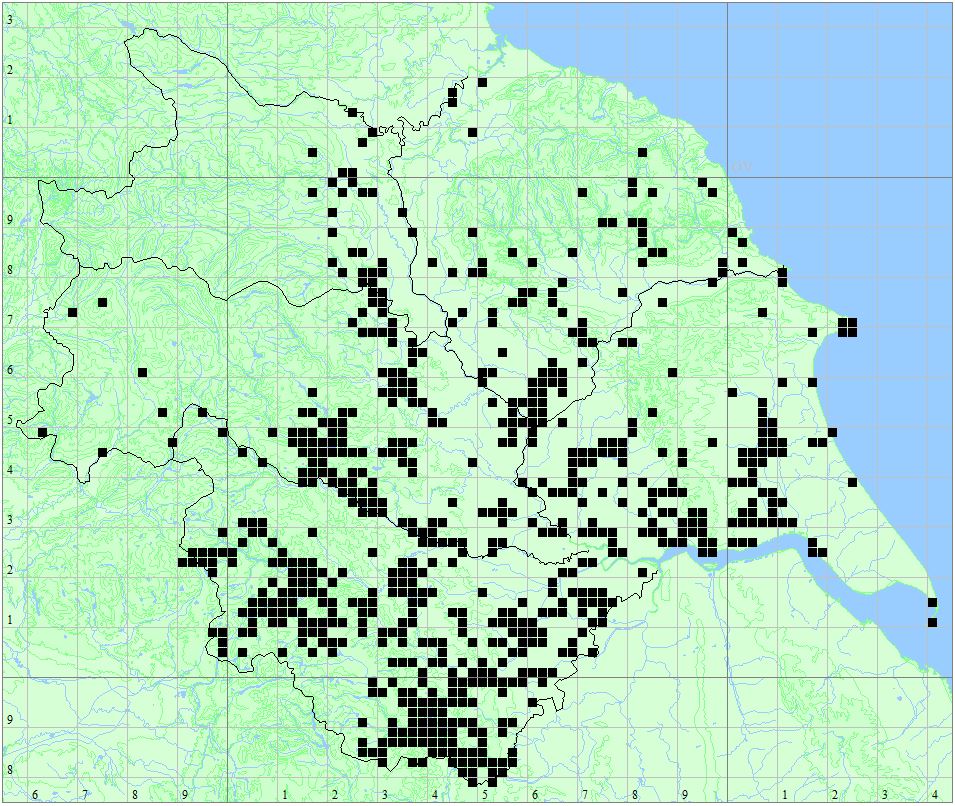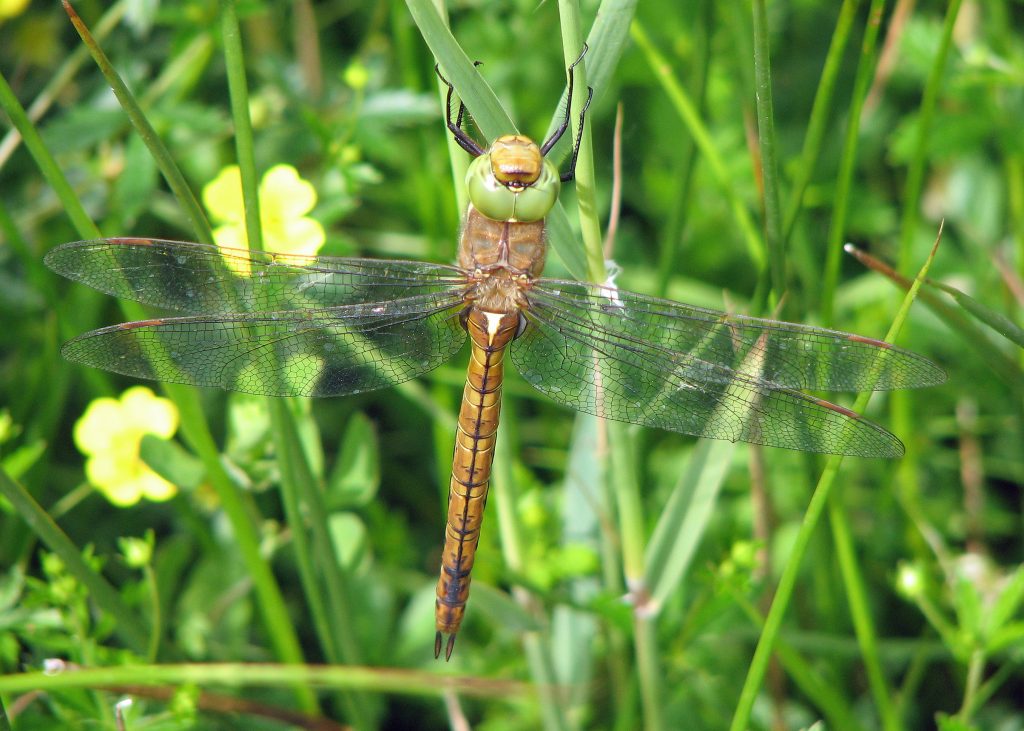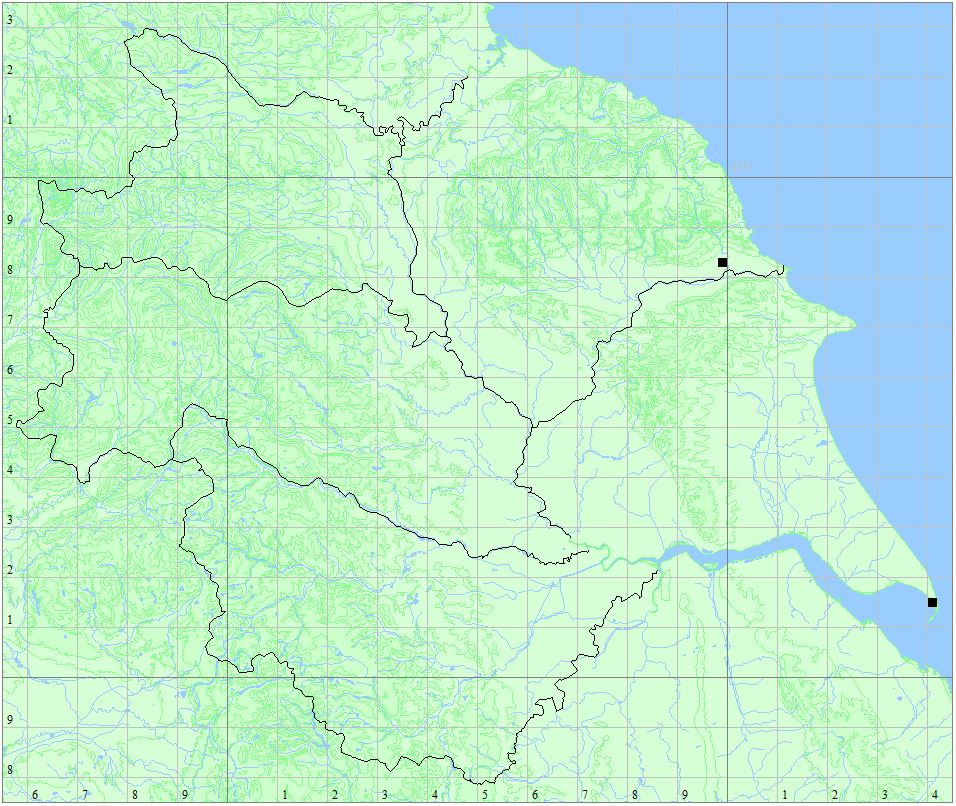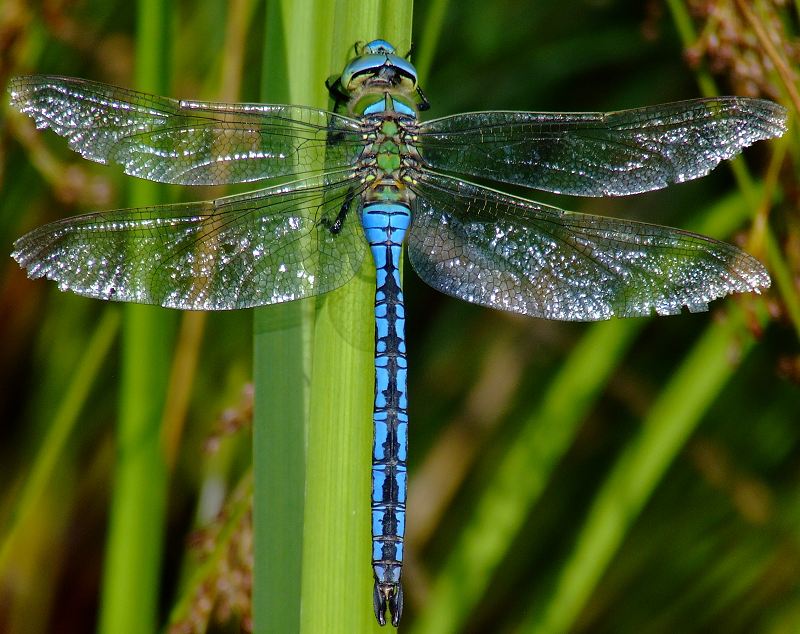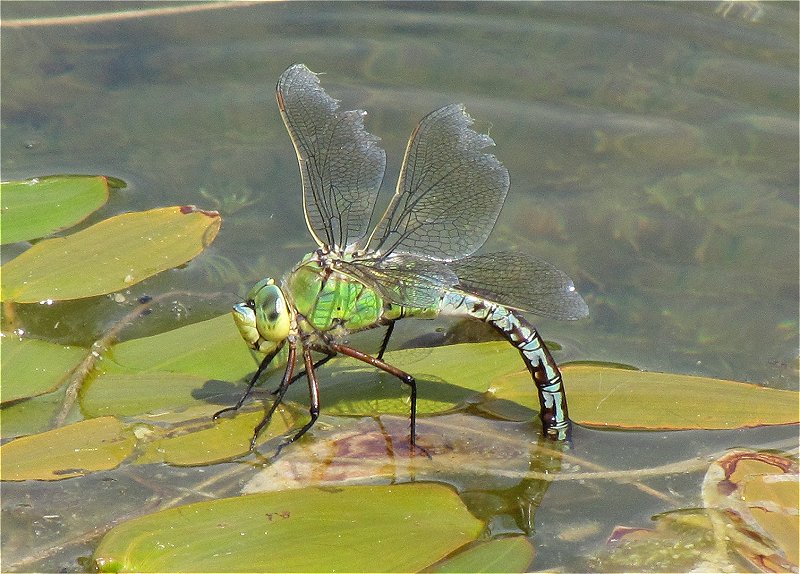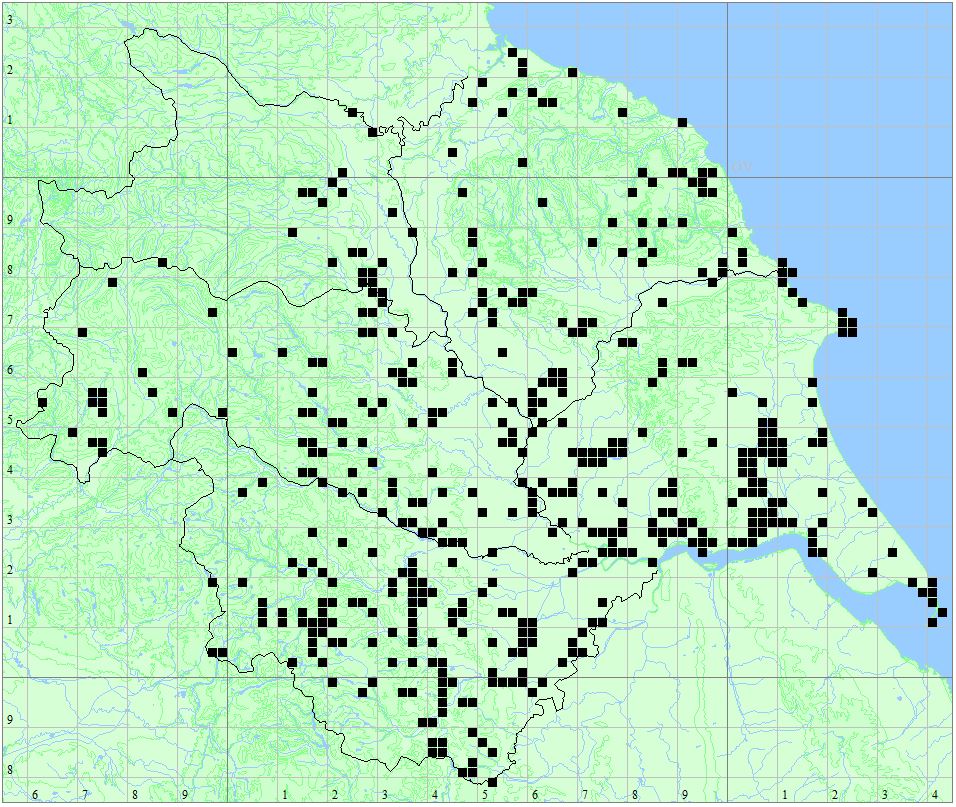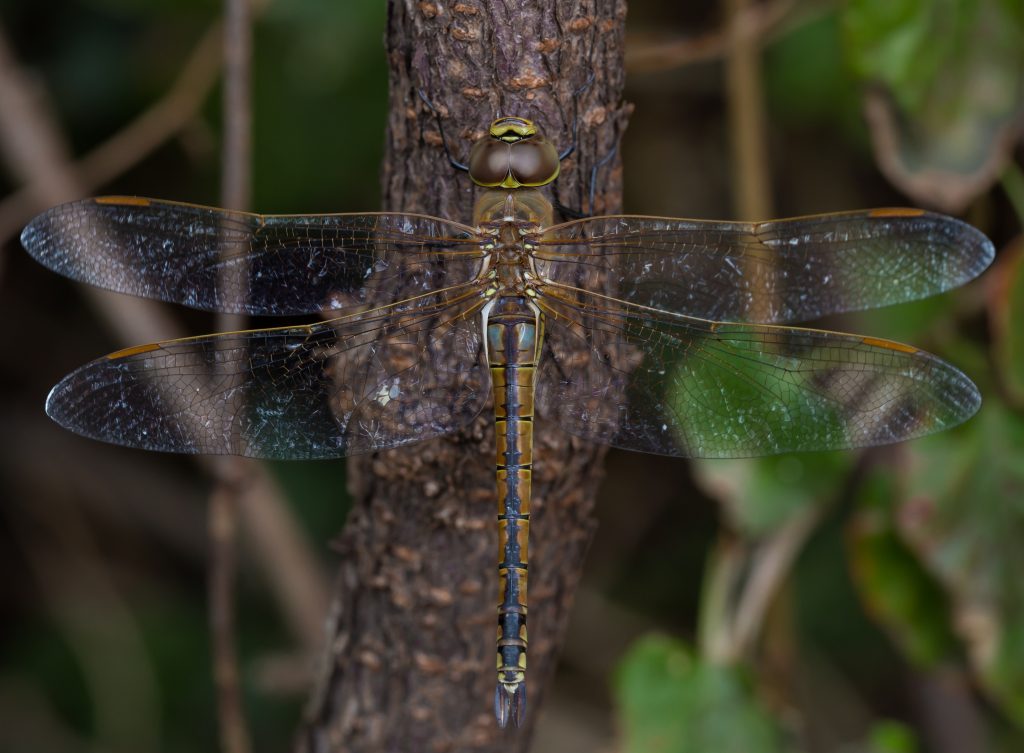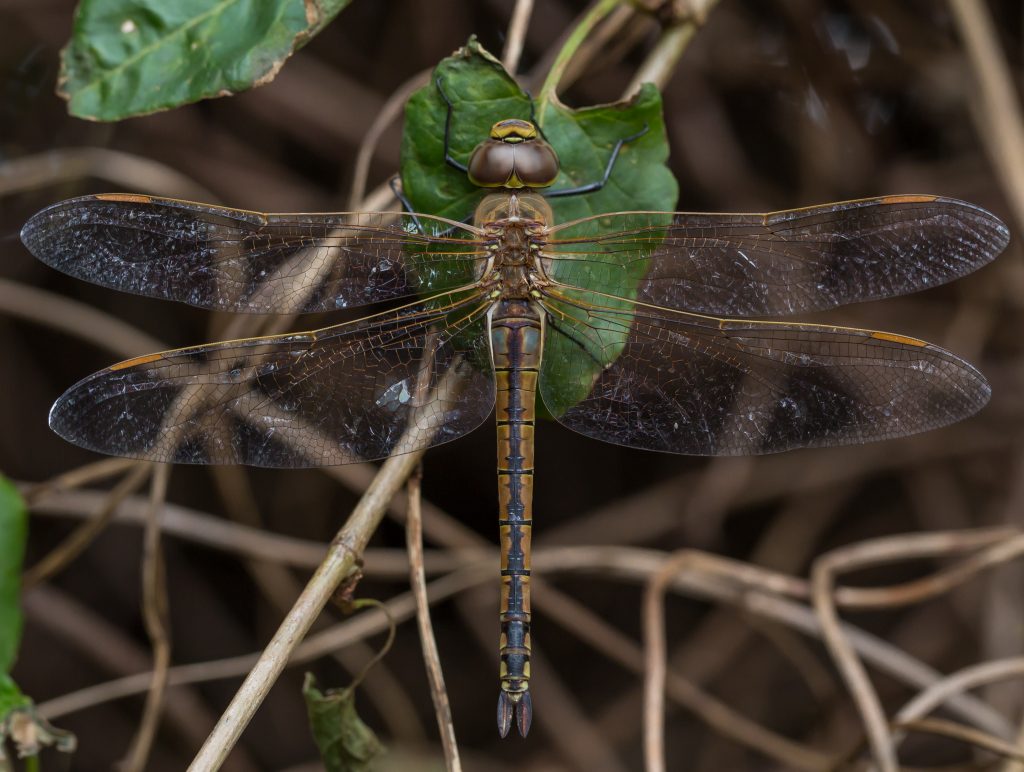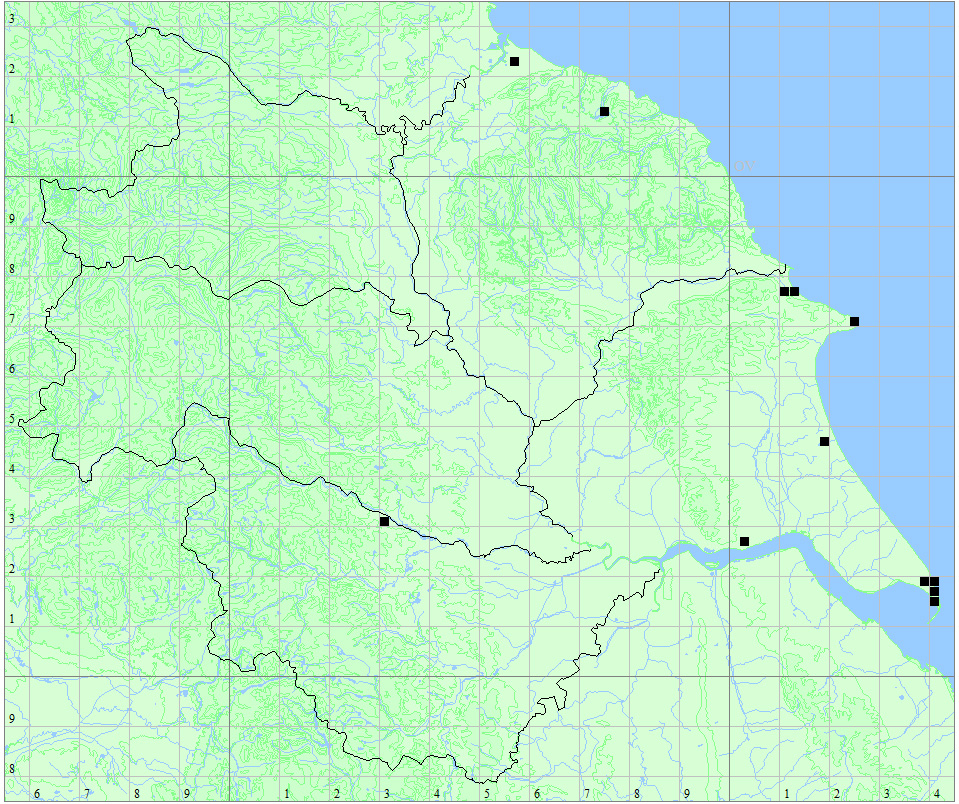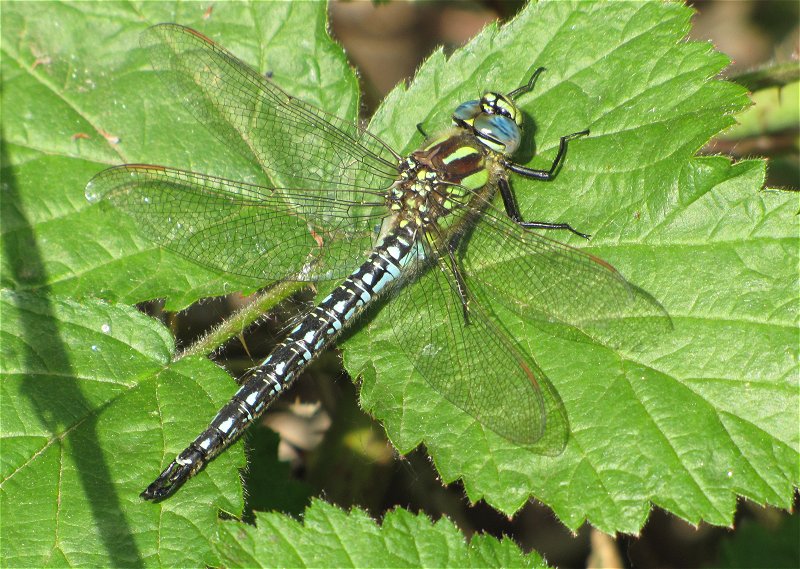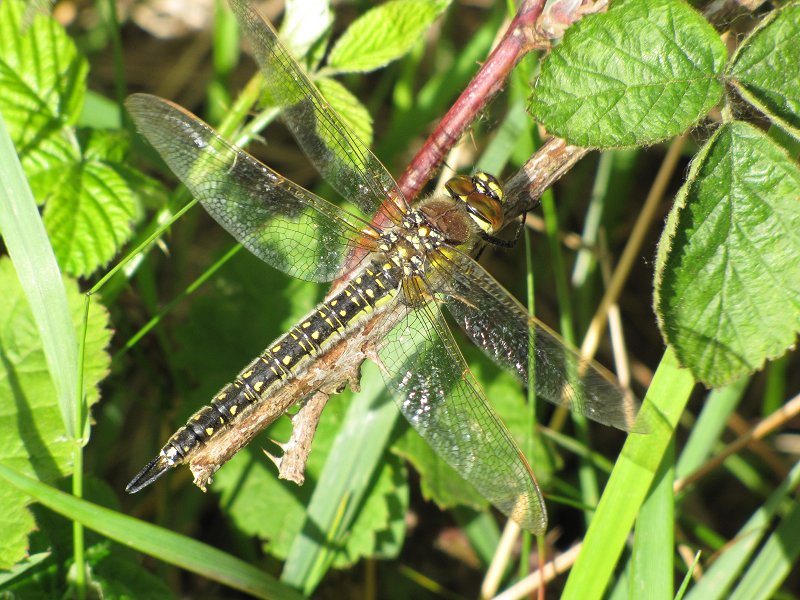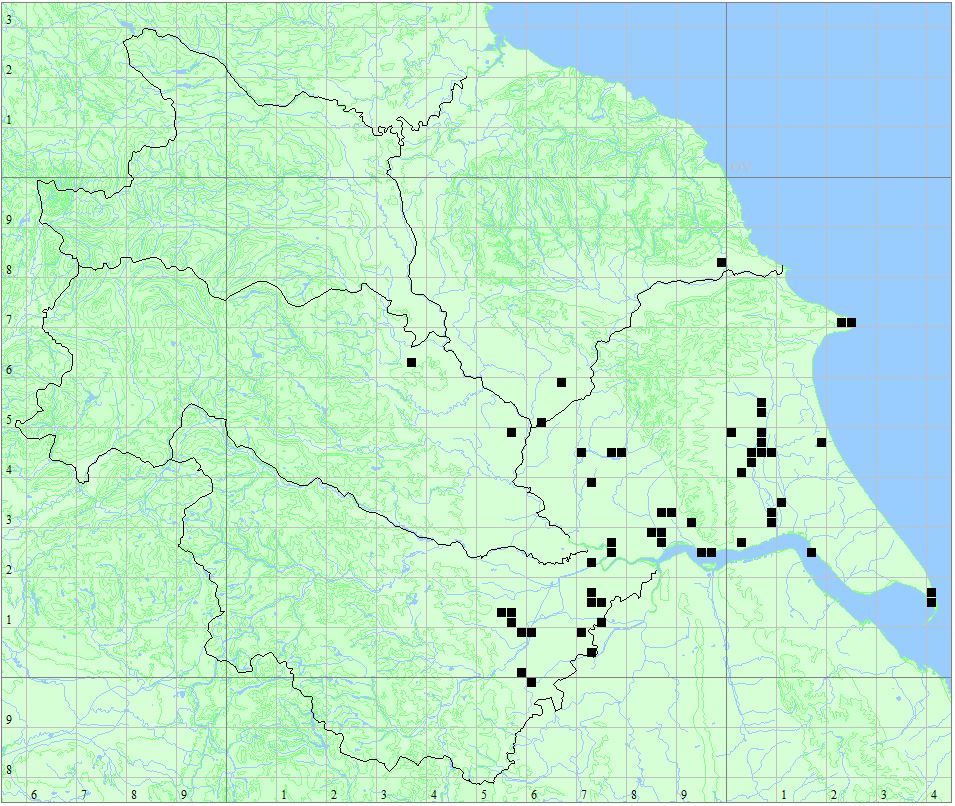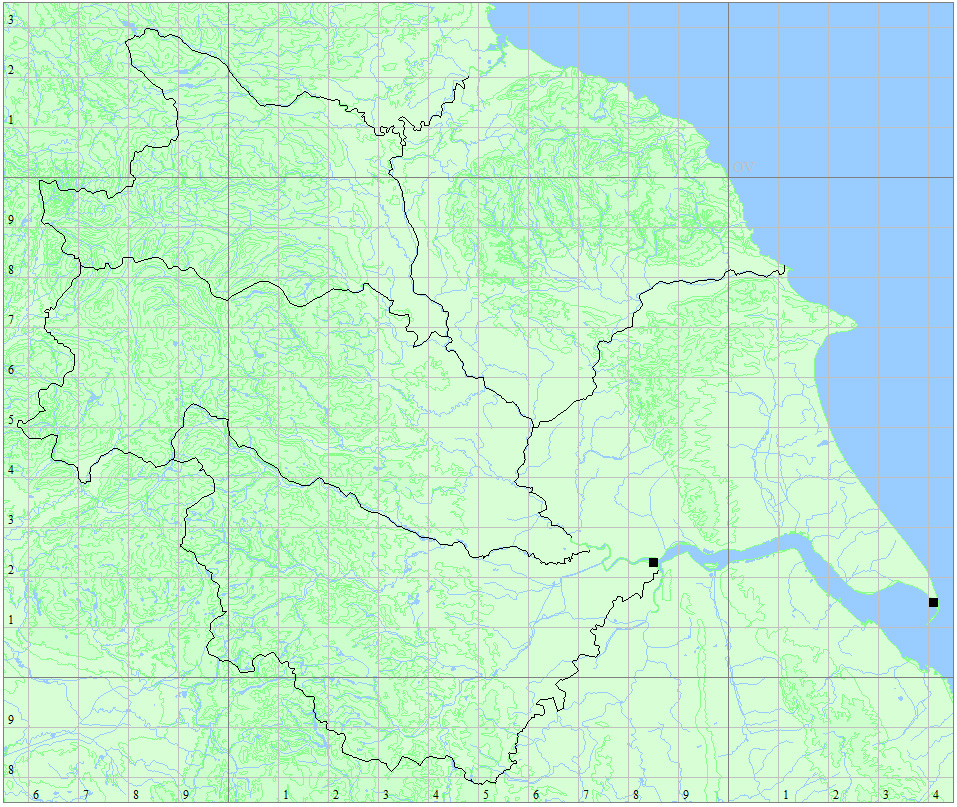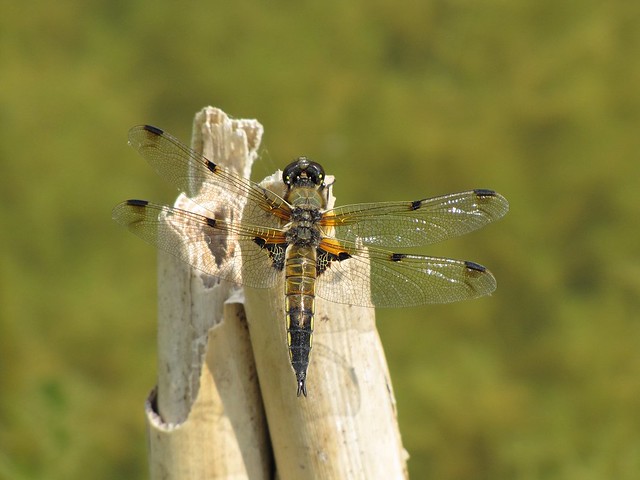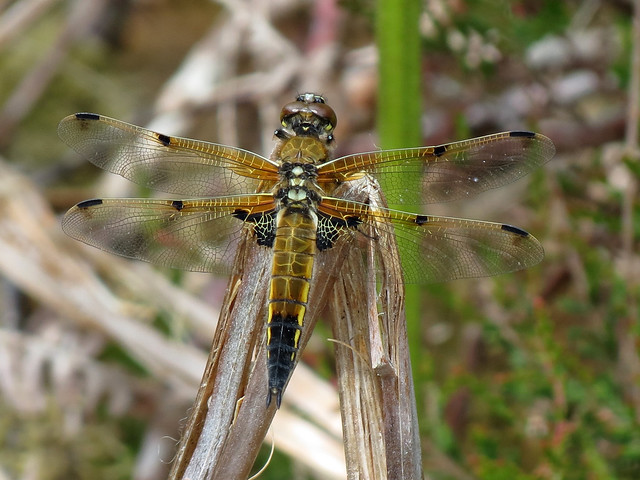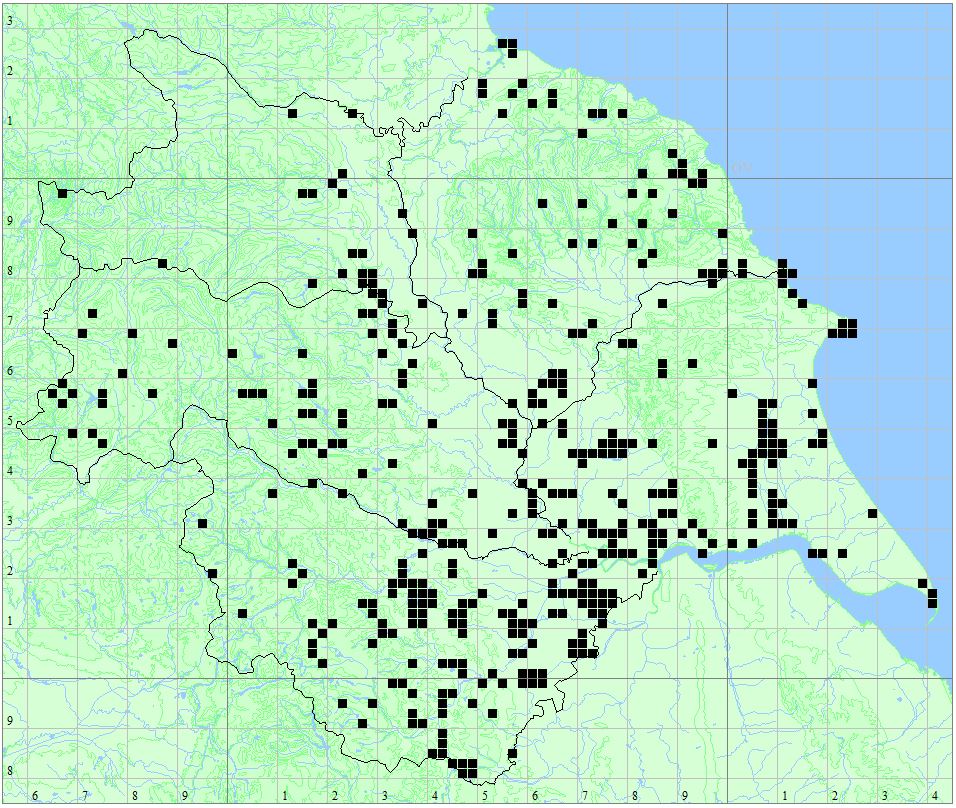<-Previous Species – Next Species->
Length
63mm, Wings 87mm
Males
Thorax brown with broad thoracic stripes, with short indistinct antehumeral stripes; abdomen brown, yellow triangle mark on segment 2, separate pairs of blue spots along rest of abdomen; legs brown; eyes bluish; wings have brown costa.
Females
Thorax antehumeral stripes very restricted, often missing; abdomen brown with small yellow-brown spots; long anal appendages. Brown costa, leading edge to the wing.
Habitat
Still or slow-flowing waters including ponds, lakes, sand and gravel pits, reservoirs, slow-flowing rivers, canals and ditches. Will tolerate brackish conditions, though avoids acidic water.
Behavior
None territorial and often present in high densities with little sign of aggression. Frequently hovers, searching for females in marginal vegetation. Both sexes can be found well away from water in sheltered locations, such as woodland rides and hedgerows. Regularly found perched in the open. Copulation is lengthy and once complete, the female will oviposit alone. Oviposition usually occurs into emergent plants above the water, though occasionally in bare mud. Emergence usually occurs the following year, often during the night. Despite being abundant late in the season, few exuviae have been found. Those that have been recovered are usually found low down in thick vegetation. Due to the lack of breeding data, it would suggest that the majority of adults observed are migratory individuals.
Flight Period
Distribution Map
Locations
- Rodley Nature Reserve
- Moorgates Quarry LNR
- Thorne Moors – Humberhead Peatlands NNR
- Thorpe Marsh
- Oakhill & Goole Brick Ponds
- Paull Holme Strays
- Treeton Dyke
- Rabbit Ings
- Walton Colliery Nature Park
- Pugneys Country Park
- The Yorkshire Arboretum
- Nosterfield Local Nature Reserve
- Fairburn Ings
- Potteric Carr
- Spurn Point
- Skipwith Common
- Saltmarshe Delph
- Pulfin and High Eske Nature Reserve
- Pocklington Canal
- Oak Road Lake, Hull
- North Cave Wetlands
- Market Weighton Canal and Newport Ponds
- Leven Canal
- Hornsea Mere
- Filey Dams
- Eastrington Ponds
- Broomfleet Washlands
- Noddle Hill Nature Reserve
- Allerthorpe Common
- Tophill Low Nature Reserve
